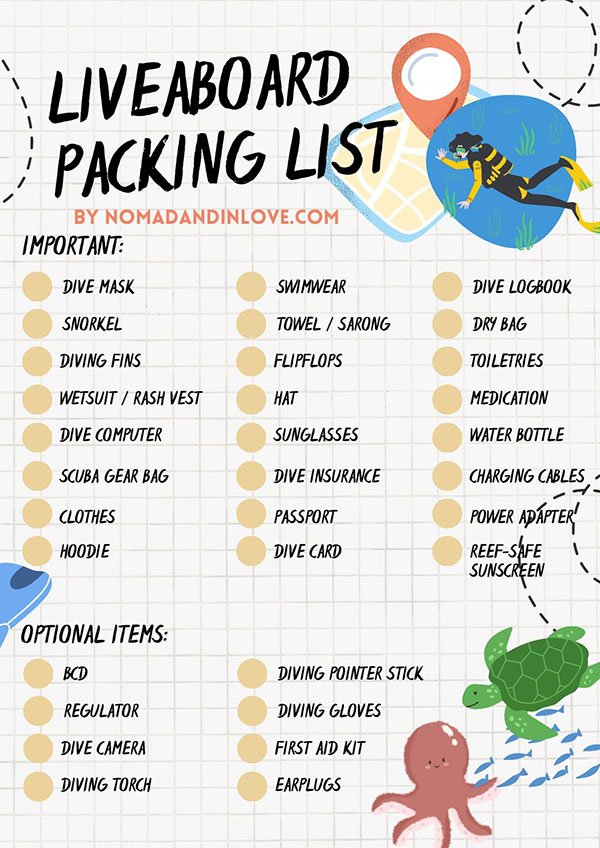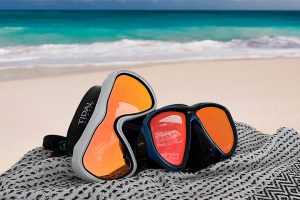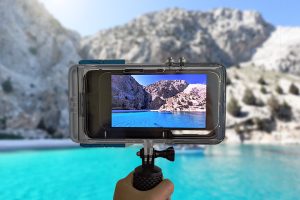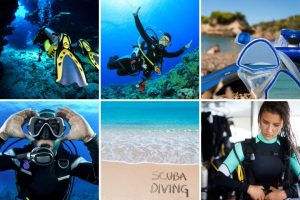
Never stress before a dive liveaboard holiday again! This ridiculously detailed packing list will ensure you have everything you need for an EPIC liveaboard dive trip. From essential scuba gear and accessories, to clothes and optional personal items you may have overlooked.
Ask any scuba diver what they dream of and the answer will be: sleep, eat, dive and repeat. No wonder a diving liveaboard is on every wanna-be mermaid and mermen’s bucket list!
But how do you prepare for your first dive trip? And most importantly, what do you pack?
We’ve been lucky enough to fulfill our liveaboard dream. But not without some rookie mistakes… That’s why we’re writing this guide.
We want to help scuba-holics like you learn from our mistakes so you can have the best liveaboard experience possible.
Traveling to the best dive sites around the world is already stressful. You don’t need the added stress of forgetting something important like your dive computer or phone charger. Touchwood!
Especially on a liveaboard. There are no shops on the open seas and dive trips like these are EXPENSIVE. Not going prepared is going to leave you feeling like a fish out of water (excuse the pun).
But fear not mermaids (and mermen)! This checklist will not only ensure you have all the essentials, but that they’re lightweight and eco-friendly too.
Unless you’re willing to wear all your scuba equipment on a flight so you can avoid paying exorbitant extra luggage fees…
Jokes aside, this liveaboard packing list has it all. From must-have scuba gear and accessories, to clothes and optional personal items you may have overlooked.
How To Pack For A Scuba Liveaboard Diving Trip
The key to packing for any liveaboard dive trip is to only pack what you need.
Most liveaboards (even the luxury boats) have limited cabin space. There’s usually just enough room for 2 beds and space to store 2 carry-on luggage bags.
Your diving gear can be stored in the common ‘wet’ area on the boat (where divers assemble before a dive). But any large luggage bags (the check-in type) are better left onshore.
We’d recommend leaving it in your hotel’s storage room. Alternatively, ask your liveaboard hosts beforehand if they provide luggage storage at their offices.
Related Guide: Going on your first liveaboard dive trip and wondering what to expect? Check out our Liveaboard Diving Guide for important tips to know before you go.
Essential Scuba Gear To Pack
These are the must-have scuba equipment you need to pack for any liveaboard dive trip (or scuba diving holiday).
Dive Mask
Let’s start with the most obvious. Your dive mask is a must! Unless you’ve somehow become Aquaman and developed 20/20 vision underwater.
You’ll need it to admire the wonderful underwater world and finally spot that manta ray you’ve been dying to see.
Remember to bring anti-fog spray or whatever method you use to prevent your dive mask from fogging up. It would be a pity to be blinded by fog when that hammerhead shark finally turns up.
We personally use these Tidal Sports Anti Fog Masks. These dive masks are specifically designed with anti-fog technology on the inner lenses so that you never have to worry about them fogging up!
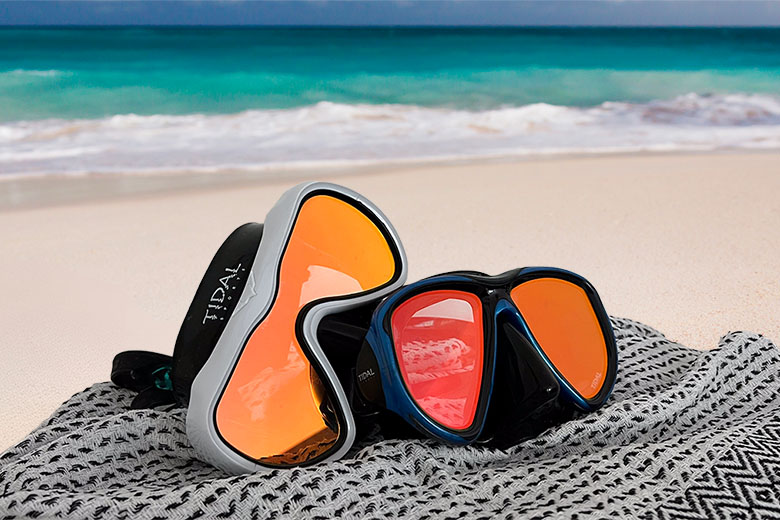
This is a must-have on any scuba holiday. Especially if you feel nervous or anxious diving (like me). I’ve shared how this has helped me overcome scuba diving anxiety and clock over 100 dives and counting.
Both our anti-fog masks have red tinted lenses. They help balance out the blue hues underwater so that corals and other marine life look more sharp, vibrant, and colorful on deep dives.
We also bring our clear lens diving masks from Mares and Cressi just in case dive conditions are not suited for tinted lenses.
Related Guide: Do anti-fog masks honestly work? Find out what the pros and cons are before buying in our Tidal Sports Anti Fog Dive Mask Review.
Snorkel
Okay… we know what you’re thinking. How did snorkel make the essential packing list?
All scuba divers know that you never use them for diving once you’re certified. But your snorkel may come in handy if you happen to come across a pod of dolphins or shoal of whale sharks on your dive trip.
Or you may just want to take a refreshing dip whilst your liveaboard is anchored.
Either way, it’s always good to have your snorkel with you because like we said earlier, there are no shops on the open seas.
Scuba Diving Fins
Another must-have item on any liveaboard packing list is diving fins, of course!
We use the Mares (Michael) and Cressi diving fins (Chloe) which are both open-heel fins. We find them more comfortable to dive in, especially when we wear them with our diving booties.
We’ve been using these Mares dive booties for 10 years and going. They’re made from 2mm thick neoprene and have thin rubber soles on the bottom for that extra grip.
They’re great not only for scuba diving but also for chasing waterfalls, hiking water caves, or any water sports.
They’re incredibly versatile and lightweight. That’s why we never travel without them.
Wetsuit or Rashvest
Having a wetsuit or rash vest (i.e. rash guard) is essential. No scuba diver wants to be chafed by their BCD, right?
We usually bring one or the other for our diving holidays because packing light is key for air travel. We’d suggest doing the same unless you have the luxury of getting to your scuba destination by car or train.
This does mean that you’ll need to do a little research before you go. Find out what the average water temperatures are like where you’re diving.
You could also reach out to your liveaboard charter and ask whether a wetsuit is necessary.

A rash vest is sufficient for us when water temperatures are 26 degrees Celsius (79F) and higher.
But if you’re someone who gets cold easily or you’re doing a lot of night dives, then you should probably pack your wetsuit.
Rash guards won’t keep you as warm as a wetsuit would. But they make wearing a fully loaded BCD more comfortable. And they’re A LOT easier to put on.
We always wear our rash vests where possible because we hate wrestling with our wetsuits.
We use the Mares Thermo Guard and Cressi Rash Guard (both long sleeves). For wetsuits (both 5mm), I have the Scubapro and Michael wears the Mares one (clearly he’s a big Mares fan).
Bonus Tip: You can always combine your rash vest with dive skin leggings if you don’t want to go ‘bare bottoms’.
Dive Computer
Packing your dive computer is a must. Your life will literally depend on it!
It’s crucial for diving safely so you can reduce the risk of getting decompression sickness (also known as the bends).
Your dive computer will be one of the most expensive scuba gear you’ll buy. If you don’t have your own, don’t worry. You can always ask the liveaboard whether you can rent one.
But you’ll eventually want to save up for your own. Especially if you’ve fallen head over ‘fins’ with scuba diving and are committed to the mermaid/merman life.
We both use the Suunto Zoop Dive Computer. It’s an entry-level dive computer but sufficient for diving recreationally.
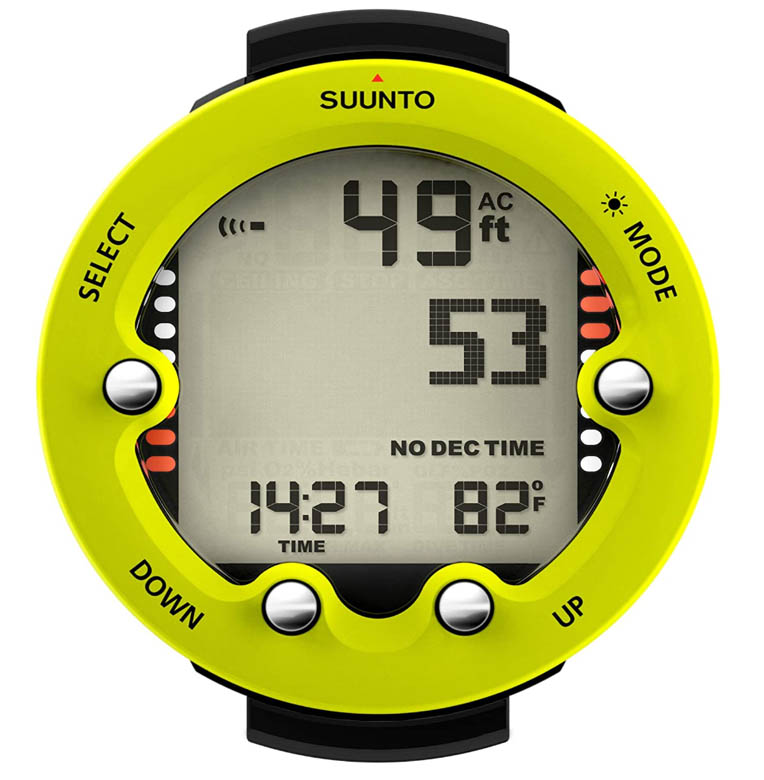
We love that the Suunto Zoop is durable, easy to use, and has a long battery life. It also has memory space to save your dive information so you can review and log your dives later.
If you’re looking to splurge for a better dive computer, we’d recommend the Suunto D5 Dive Watch. This dive computer is more versatile if you want to eventually get into tech diving or use your own air/nitrox/helium mixes.
Scuba Gear Bag
With all that scuba gear, you’ll need a bag to carry it all in.
Most liveaboards have a place for you to store your diving gear and accessories. But it’s still a good idea to have a bag to carry it to and from your cabin unless you’re willing to make a zillion trips (just kidding).
Jokes aside, it’s wise to keep your scuba equipment in a gear bag. With many divers onboard, it’s easy to get your things mixed up with someone else’s. Especially if there are gear ‘twins’.
We use the Mares Cruise Mesh Bag. We’ve had this diving gear bag for 10 years (and going) and absolutely love it! It’s super lightweight and compact for traveling. Yet big enough to fit all the scuba gear needed for two divers.
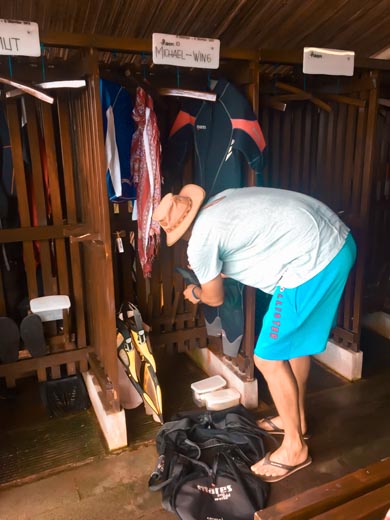
This gear bag alone fits both our wetsuits, rash vests, 2 sets of diving fins, snorkels, scuba masks as well as our dive booties. Plus, we love that it has a small zip compartment on the side for our smaller items like our anti-fog spray, PADI dive cards, keys, and cellphones.
We also love that its durable mesh fabric makes it easy to wash, clean and dry.
If Mares is not sold where you live, the Rogue Endeavor Mesh Dive Bag is a great alternative. The design is very similar but it has a larger dry compartment for storing your valuables.
Bonus Tip: Don’t worry if you don’t have all the gear listed above. You can always rent them from your liveaboard. Some liveaboards include the dive equipment rental in the rate. If you’re not sure, make sure to ask beforehand.
Must-Have Clothing and Accessories
What to wear on a liveaboard dive boat when you’re not living the mermaid life.
Clothes
As much as you want to stay underwater, you’ll eventually have to come up and face the reality that a surface interval is needed.
Staying in a wet, wetsuit is not fun for anyone. You’ll need dry clothes to haul you over till your next dive.
Any dry clothes will do. But based on our personal experience, it’s better to pack lightweight and comfortable clothes that will dry easily.
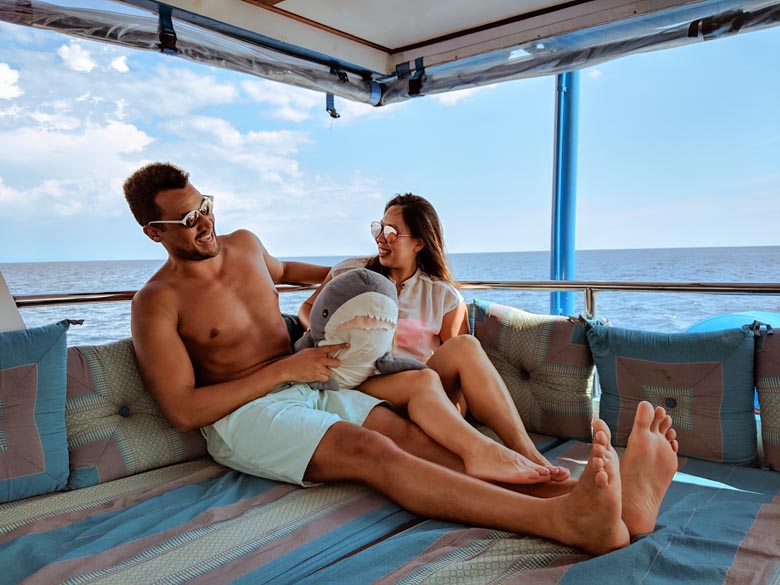
That way, you can easily wash or rinse them if you need to. It also means you can bring less clothes and have more space to pack your scuba gear. It’s a win-win!
People dress very casually and comfortably on a liveaboard. So don’t worry – you won’t be out of place.
Windbreaker or Light Jacket
It can get windy and cold when the liveaboard is sailing from one dive site to the next. That’s why it’s always wise to add a windbreaker, light jacket, or hoodie to your packing list.
Swimwear
Swimwear, of course! Speedos, swim shorts, bikinis, monokinis – whatever rocks your boat as long as it’s comfortable to wear underneath your wetsuit or with your rash vest.
As a woman, I prefer a two-piece swimsuit. Logistically it’s just easier for dashing to the loo. There’s no peeing in the wetsuit here…
We’d recommend bringing 2 to 3 sets of swimwear so you can let them dry in between dives.
Beach Towel or Sarong
Not all liveaboards will provide you with towels. We’d recommend asking before you bring them along.
You’ll need two towels – one for showering and another to dry yourself between dives.
If you have to bring your own, we’d recommend packing sarongs instead. They take up less space and are more lightweight. Plus, they also rinse and dry a hell of a lot faster than towels.
Say goodbye to rubbing yourself down with moist, damp and smelly towels on a liveaboard ever again!
As an added scuba hack, you can double up and use your sarong as a cover-up between dives too.
Towel Clips
Towel clips aren’t exactly something you’ll wear. But they sure come in handy for drying clothes, beach towels or sarongs between dives.
Simply clip your clothes to the railing, and let the sea breeze and sunshine do the rest.
We like these towel clips. They’re versatile, lightweight and can be used on liveaboards, cruises and even beach chairs.
Flipflops
Fins are great underwater, but flip-flops are better onboard. We’d recommend any flip-flops with rubber soles for added grip.
Crocs are perfect for a liveaboard. They’re ‘fugly’ but their non-slip, waterproof, and oh-so-comfy features more than makes up for its look.
Save Me For Later
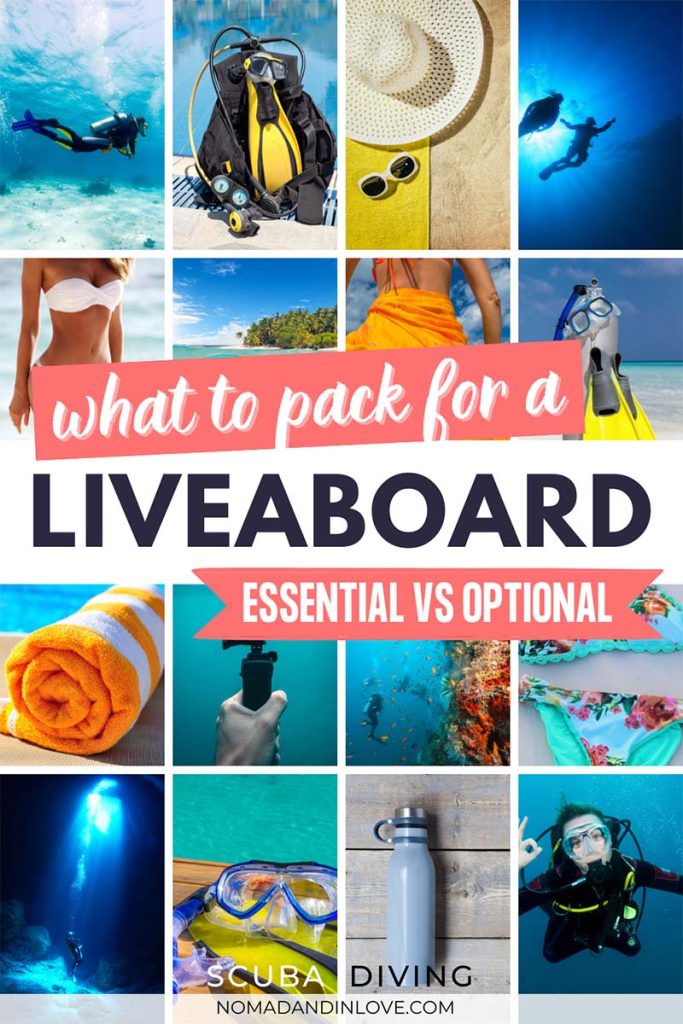
Hat
A hat or a cap – anything with a wide brim that will give your face some relief from the sun.
We know it’s not necessary underwater. But if you want to tan on the upper deck of the liveaboard, these will come in handy.
Sunglasses
Also not useful underwater. But important for protecting your eyes if you’re diving in a sunny, tropical destination.

Personal Items and Medication
These personal items are often overlooked. But they’re essential on any scuba diver’s liveaboard packing list.
Dive Cards and Other Documents
Some liveaboards will need your dive cards so they can see what diving certification you have.
Especially for the trickier dive sites around Galapagos Islands (Equador), Cocos Island (Costa Rica), Hin Daeng (Thailand) or Aliwal Shoal (for the famous ‘Sardine Run’) in South Africa.
If your liveaboard doesn’t state what certification is required, we’d recommend asking before booking.
Don’t know where to scuba dive next? Check out our Liveaboard Boats guide to find out how much it costs to dive some of the best dive sites around the world.
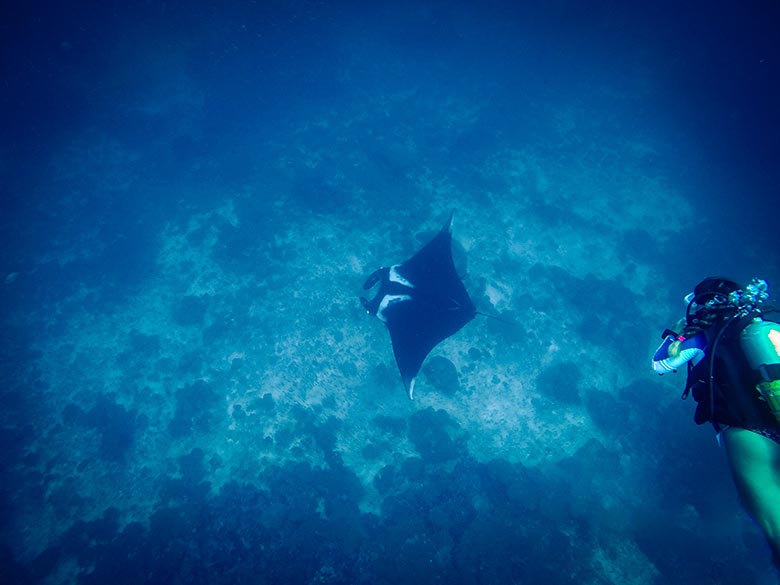
You may also need to bring your passport with you depending on the travel requirements of the country.
And last but not least – your dive insurance card or documents.
Standard travel insurance won’t cover injury, loss, or accidents caused by scuba diving. You’ll need to either buy separate scuba diving insurance. Or ask your travel insurance provider to add on ‘Sports and Activities’ to get additional cover for diving.
We like getting our travel insurance from SafetyWing. It gives us comprehensive cover in case anything (injury, illness, theft and even trip cancellation) goes wrong. When we go scuba diving, we just add on the Adventure Sports policy so that we’re covered for any scuba diving related accidents.
Bonus Tip: If you’re PADI certified (like us), you can show your dive e-card on the PADI app.
Dive Logbook
Besides dive certification, you may need to log a minimum number of dives for certain scuba liveaboard trips. Again, this will depend on where you’re diving and how difficult the dive conditions are there.
This is where your dive logbooks will come in handy.
Some liveaboards will ask to see this to ensure that you’re experienced enough. Others may just take your word for it…
In any case, what’s important is that you never lie about your dive experience. Scuba diving is fun, but it’s also dangerous. As much as we want to be mermaids/mermen, we are not. And so we must always dive within our limits for our safety and the safety of others.
If you’ve watched the Netflix documentary ‘The Deepest Breath’, you know what we mean.
We’re not going to lie. Logging our dives is our least favorite part of scuba diving.
Partly because all we want to do after a dive is talk about what magical beings we saw underwater. The other reason is that logbooks tend to look like a dog’s chew toy over time.
That was until we got these Dive Proof logbooks.
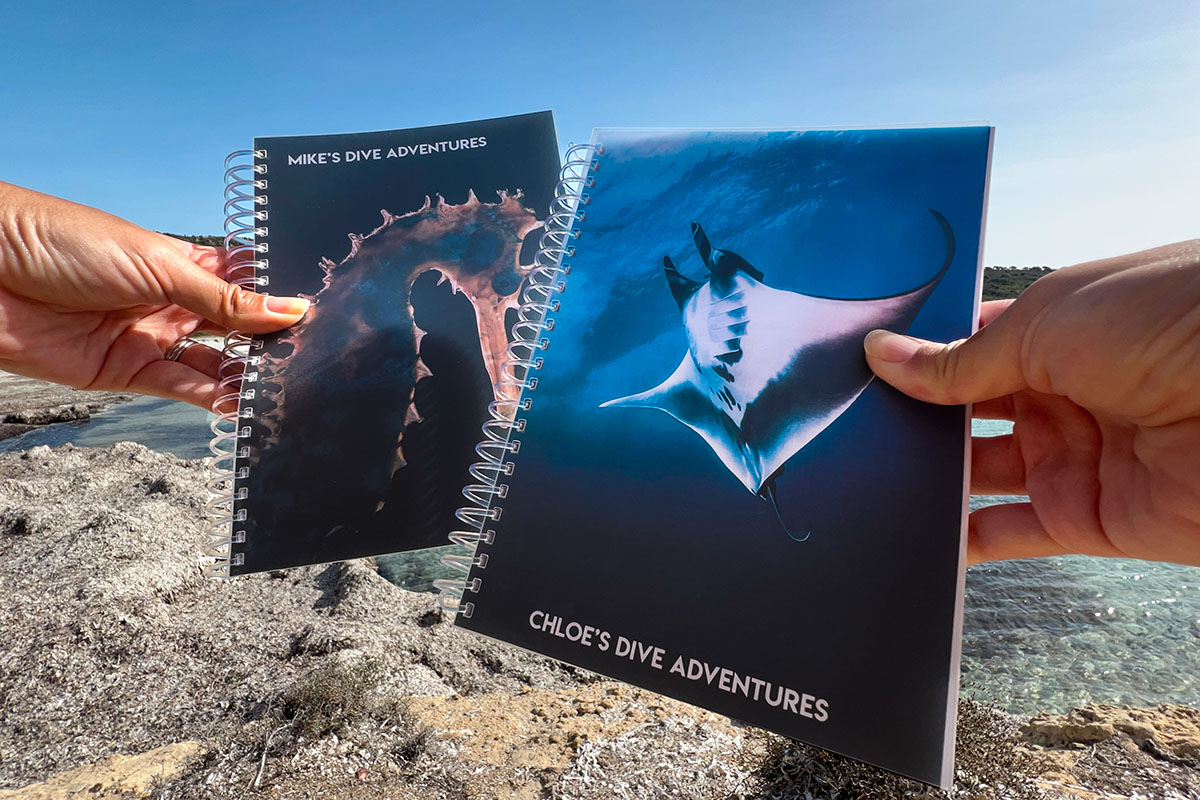
As the name suggests, these dive logbooks are WATERPROOF! The pages can’t get wet or torn yet they’re writable with a normal ballpoint pen or pencil.
I honestly don’t know how they did it – but it’s a total game changer!
We love the fact that you can completely customize and personalize these logbooks. Not only the front cover and the name of the logbook but also its size (A5 or A6), the number of pages, and whether you prefer individual journal entries to multiple, short and concise logs.
The cherry on top? The company is run by fellow scuba-holics (who are also dive instructors) with a powerful environmentally-friendly mission.
Cash for Tipping The Liveaboard Crew
Okay – we’ll be honest and admit that we didn’t know this when we embarked on our ‘virgin’ liveaboard dive trip. But it’s customary to tip the crew at the end of your scuba adventure.
How much should you tip exactly? We’ve done a bit of digging and it seems around 10% of the cost of the trip is the norm.
Tipping can’t usually be done by card and that’s why you’ll need cash on a liveaboard.
Dry Bag
Another essential (and affordable) item every diver should have on their packing list is a dry bag.
They’re incredibly versatile and we always travel with them.
For a liveaboard trip specifically, dry bags are great for storing your valuables whilst you’re diving. At the end of the trip, we use these bags to store our wet laundry so that it doesn’t contaminate our clean clothes.
We have these dry bags from Ocean Pack which we’ve had for 10+ years (yep – it’s that durable). We take it on every trip whether we go scuba diving or not.
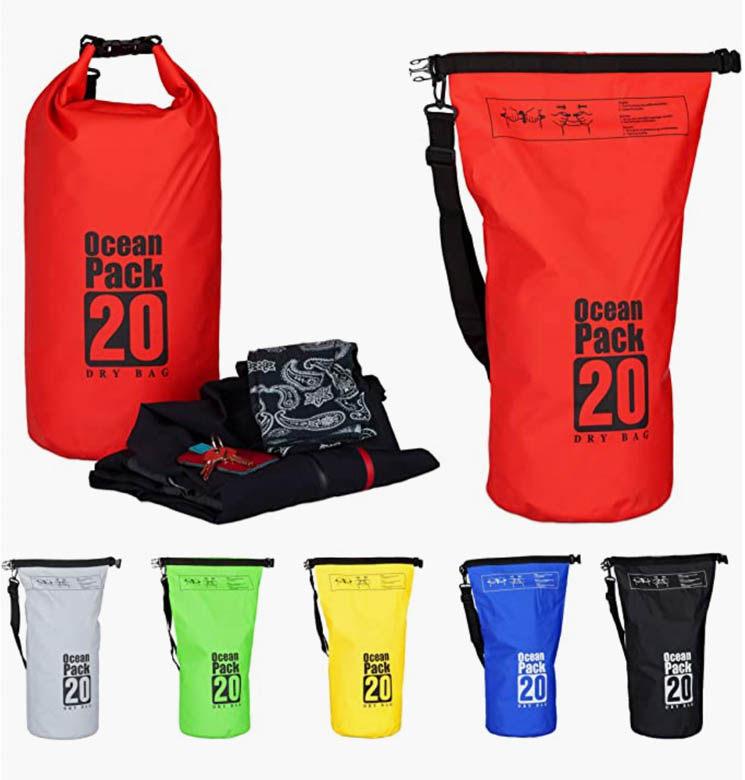
These are so useful that we ended up buying 2 more Ocean Pack dry bags to make a family of 3.
If you’re thinking of getting one, we’d recommend buying the 20-litre dry bag for the most versatility.
Reef-friendly Sunscreen
As scuba addicts ourselves, we feel at liberty to say that all scuba divers care for the ocean and environment. I mean, how can we not after seeing and experiencing the fascinating underwater world?
That’s why it’s crucial that we do our part and be eco-friendly wherever possible. Changing up your sun lotion for a reef-friendly one is an easy win.
Any coral-friendly sunscreen will do as long as it doesn’t contain the harmful oxybenzone or nano zinc oxide chemical that destroys marine and aquatic life.

We love the SurfDurt Organic Sun Cream. It’s made from food-grade ingredients such as coconut, avocado and jojoba oil. Making it not only organic and reef-safe but also water-resistant and effective for protecting your skin against harmful UV rays.
If you’re based in Europe and can’t buy SurfDurt where you live, this Suntribe Organic Sun Cream is a great alternative.
Biodegradable Toiletries
Along with your reef-friendly sunscreen, using biodegradable or eco-friendly toiletries whilst on a liveaboard can help you do your part in protecting our fragile oceans.
So basically any personal hygiene items like shampoo, conditioner, body wash, face wash, moisturizer, toothpaste and anything else you use should be biodegradable where possible.
Some liveaboards, like the one we went on to explore the Similan Islands in Thailand (The Smiling Seahorse), provide biodegradable toiletries onboard. But most liveaboards still don’t…
Why biodegradable you ask? Well, because anything that goes down the drain (or toilet) is going into the ocean… Sad – but it’s a reality.
Eco-friendly Shampoo and Conditioner
The good news is that there are awesome, eco-friendly toiletries that are perfect for live-aboard dive trips. Like the shampoo and conditioner bar from Ethique.
We love that not only all the ingredients in these hair products are 100% natural and therefore biodegradable, but they’re also sustainable and ethically sourced (hence the name Ethique).
This means you can leave it in your hair and giant leap straight into the ocean without worrying that the ingredients will harm the ocean or marine life. Making it the perfect hair product to bring with you on any diving liveaboard (or any scuba trip)!

The bonus? These shampoo and conditioner bars are way more lightweight and travel-friendly compared to your commercial liquid hair products.
Bonus Tip: Another way to protect your hair from drying out when scuba diving is to put coconut oil in your hair. All you need is a small jar of coconut oil for the trip. Rub it in damp hair before your first dive, and leave it in until you wash your hair out in the evening. Voila! Soft, shiny mermaid hair always!
Menstrual Products
If you’re a woman, remember to bring your menstrual products if your diving holiday happens to coincide with ‘shark week’.
If you use tampons, make sure to get the biodegradable option. But ideally, menstrual cups are the way to go because they create zero waste (and save you a TON of money).
I know menstrual cups are a hit or miss with my fellow mermaids. But for me, they were an absolute game changer.
Yes – it took me a few times to figure out how to use it properly. But once the lessons were learned (and the school fees were paid), I would never go back to pads or tampons again – liveaboard or not.
I’ve been personally using this Papperlacup menstrual cup by Einhorn for 5 years (they’re based in Berlin where I live). But you can also get OrganiCup or any menstrual cup of your choice as long as it’s made from medical-grade silicone.

Wearing a menstrual cup is perfectly safe for scuba diving. I’ve done it and I haven’t become shark food yet (just kidding). Jokes aside – I find menstrual cups more comfortable to wear. Plus, they’re also more discreet than tampons.
Other Personal Hygiene Products
Contact lens solution and your contact lens (of course) if you’re a ‘four-eyed’ human like me.
Medication
Medication is a must-have on any vacation packing list. For a liveaboard dive trip, make sure you bring:
- Seasickness tablets (if you’re prone to motion sickness)
- Ear infection drops (if you tend to get ear infections after scuba diving)
- Malaria tablets (if you’re diving in a malaria-risk zone)
- Prescription medication (especially if you have allergies)
- Panado (or paracetamol)
- Antihistamines
Bonus Tip: Double check with your doctor or pharmacist that you can take the medication before scuba diving.
Reusable Water Bottle
Staying hydrated is crucial when you’re on a liveaboard scuba diving 3 to 4 times a day. The combination of breathing compressed air, swimming in salty water, and sweating in your wetsuit, makes you more prone to dehydration.
Luckily, you can easily prevent dehydration and reduce your chances of getting decompression sickness by drinking enough water.
All liveaboards provide drinking water (not in plastic bottles hopefully). So all you have to do is drink up.
We always bring a reusable water bottle when we travel. They’re especially great on liveaboards because you can keep track of how much water you’re drinking.
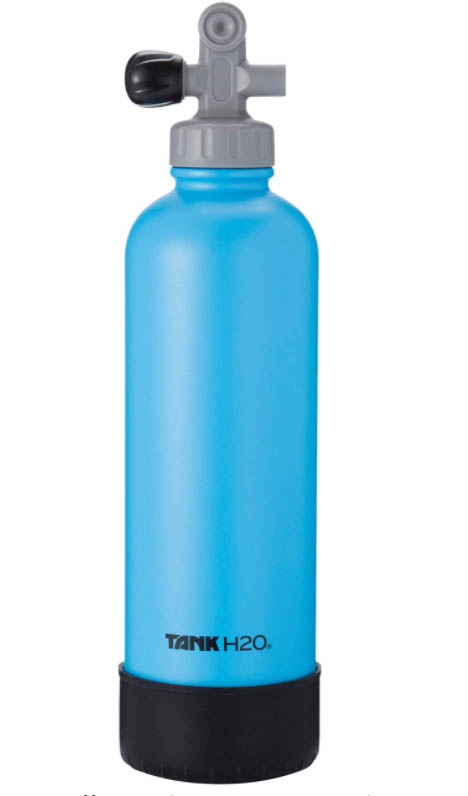
If you love anything diving-themed, you’ll love this 700ml scuba tank-shaped water bottle. It’s made from food-grade stainless steel and is durable, lightweight, and most importantly 100% recyclable.
It also makes for a great gift for you or your dive buddy!
Bonus Tip: It’s worth adding electrolyte supplements or Rehydrate to your liveaboard packing list. They taste great and will help you replenish vital salts and minerals.
Snacks
Okay… maybe snacks are optional. But if you’re like us, then snacks are a MUST!
All liveaboards include all meals and beverages (usually non-alcoholic only). Some also sell snacks, beer and wine. But it’s always good to bring your own nibbles if you’re prone to particular cravings.
Bring whatever your heart (or tastebuds) desire as long as it won’t spoil without a fridge and you have the space for it. We always carry nuts, sweets, granola, and chocolate bars for when the craving hits.
Charging Cables
Unless you live under a rock (or coral), you’ll need charging cables. Charging cables for your phone, laptop, underwater camera, as well as your dive torch or underwater camera dive light.
We’d suggest bringing a power bank as well. Some liveaboards have limited charging stations so you might have to take turns charging all your devices.
If you don’t have one, we recommend this waterproof power bank that doubles up as a torch. We love that this power bank is compatible with most devices, from iPhones, Samsungs, and Google Pixels to iPads.
It can also charge 2 devices at the same time. Making it perfect for you and your dive buddy.
International Power Adapter
Traveling with an international power adapter is always a good idea!
We love this Redagod Worldwide Travel Adapter. It can be used in over 224 countries and can charge up to 6 devices at the same time.
Optional Things To Bring
We’ve listed these as optional items to pack for a liveaboard trip for a few reasons. They’re either not essential for scuba diving, too expensive, heavy and impractical for air travel, or require regular maintenance.
Most beginner scuba divers won’t have the diving equipment listed below. And that’s totally okay because buying gear like BCD and regulators is an investment. Plus, you can always rent them from dive shops.
We’ve been diving for 10+ years and don’t personally own a BCD or scuba regulator because it’s too impractical to fly with.
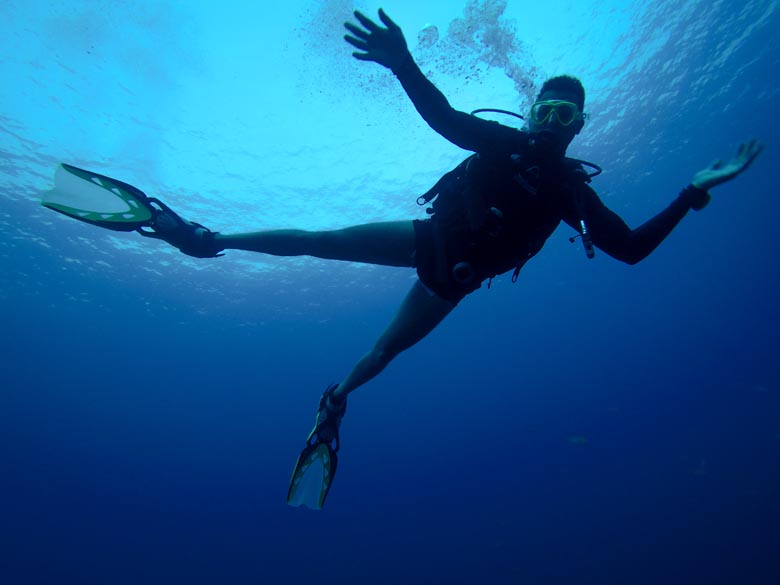
But if you’ve already invested in these items, by all means, bring them with you if you have the extra luggage space.
BCD
A BCD (or buoyancy control device) is essential for scuba diving of course. Most liveaboards include dive equipment hire, so if you don’t have one (or don’t have space to fly with one), you can always just rent a BCD.
If you often have to fly to reach your scuba diving destinations, you could consider getting a travel BCD. They’re designed to be lighter and less bulky than your normal BCD.
We often travel far and for long periods, so renting a BCD from a reputable dive center personally makes more sense for us.
Scuba Diving Regulator
No regulator means no breathing underwater (and no bubbles). So don’t forget to pack your regulator, octopus, and pressure gauge.
Like we said, we always rent this. If you bring your own, make sure you’ve checked that it works and that it’s been maintained and serviced.
Underwater Dive Camera
This is definitely not a must-have, but rather a nice-to-have.
Underwater dive cameras are great for capturing evidence of that mimic octopus or thresher shark you’ve been dying to see. A scuba selfie doesn’t hurt either…
If you have an underwater dive camera, don’t forget to bring the all-important accessories. Housing, rigging or tray stabilizers, dive lights, lens filters, extra batteries, charging cables, traveling case, extra SD cards… Basically, the whole shebang!
Not sure whether you have it all? Assemble everything as if you’re going for a mock dive so you can make sure you have everything.
You can also take pictures and videos underwater if you have an iPhone. All you need is a professionally designed waterproof case.
We use the ProShot Dive Case. An airtight, waterproof and leak-proof case that’s equivalent to underwater housing, but for your iPhone. Allowing you to dive with your phone down to a maximum depth of 40 meters (131ft) underwater. Incredible, right?!
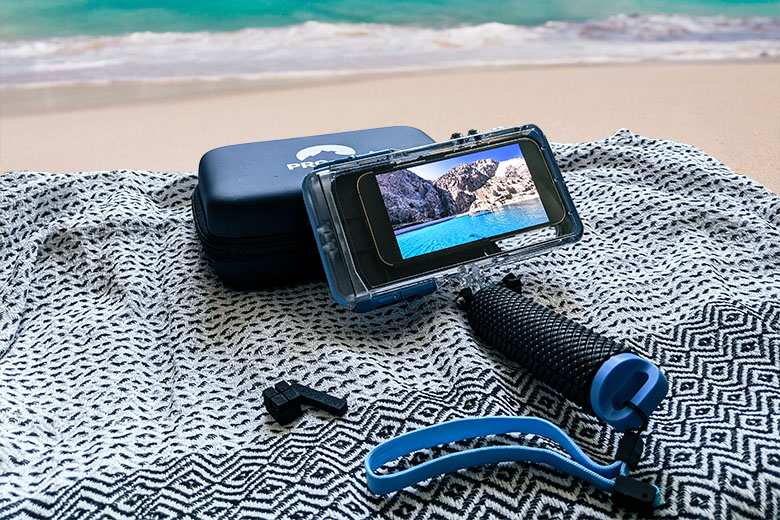
It comes with a floating hand grip and a protective travel case. But if you really want to take your scuba photography up a notch, you can buy color-correcting lens filters and underwater dive light for this scuba diving phone case too.
Check out our ProShot Waterproof iPhone Case Review to find out more. We’ve shared how easy it is to use, the photo and video quality, how waterproof it is, as well as its pros and cons.
Diving Torch
This is personally an essential item for us. But if we were honest – having a diving torch (or flashlight) is optional.
Dive torches are great for discovering what exotic marine life is lurking in the shadows, whether that’s under rocks or between coral.
We find this scuba accessory especially handy for finding camouflage ninjas like frogfish, crocodile fish, mimic octopus, seahorses, and other interesting critters. So if you’re muck diving, then make sure you add dive torch to your packing list.
We have the Wurkkos Diving Torch. It’s a mid-range flashlight that’s sufficient for recreational divers. But if you’re keen to spend more, my brother (a fellow scuba diver) has the more powerful ORCATORCH D710 Diving Torch.
Diving Pointer Stick
Diving pointer sticks are generally used by divemasters to get the group’s attention underwater or to point out marine life. But they can also come in handy for the average recreational diver like you and me.
On drift dives (diving in strong currents), pointer sticks can be used to anchor yourself to a rock or seabed. This will give you a moment to catch your breath if needed.
Some avid underwater photographers also use diving pointer sticks to minimize their contact with the reef when taking macro photography.
Pointer sticks are no doubt a versatile accessory to bring on a liveaboard dive trip. But if you get one, please use it ethically.
This means that you should never use your diving pointer stick to poke, tease or aggravate any marine life. And always check that there is nothing on the sand or rocks (by waving your hand at it) before putting your pointer stick on it.
Diving Gloves
Diving gloves are nice to have. But not necessary on a liveaboard unless you’re diving in cold waters (why would you do that?!).
Before packing your dive gloves, make sure you ask your liveaboard whether it’s allowed. Some liveaboards won’t allow you to dive with gloves to ensure you don’t touch anything underwater.
First Aid Kit
First aid kits are always essential on any scuba diving trip. All reputable liveaboards should have one onboard.
But if you want to bring your own, remember to pack adhesive bandages, cream for sting and bites, disinfectant, face mask (dive masks don’t count), antiseptic wipes, Rehydrate and antihistamines.
Other Creature Comforts
Pack earplugs if you need absolute silence to fall asleep.
Depending on where you’re diving, some liveaboards may use the evenings to get you to your next dive site. The combination of the engine running and the boat creaking can make it difficult for sensitive sleepers to get a good night’s rest.
If you need between dive entertainment, a book, e-reader or iPad should sort you out.
What Not To Pack For A Liveaboard Dive Trip
Never bring an air tank, weight belt or weights if you’re flying – they’re literally deadweight. Just rent them from the liveaboard or dive shop.
We once bought weight belts and weights with us for a dive holiday and it’s a rookie mistake we’ll never make again…
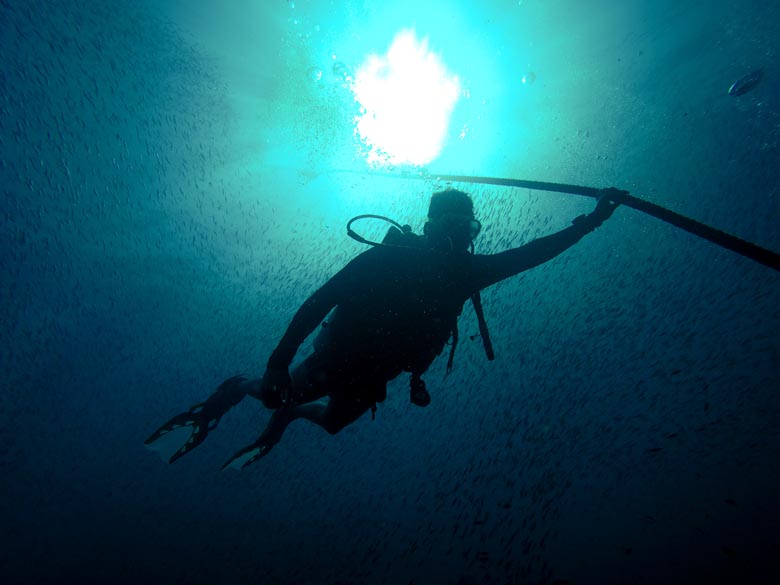
Wrapping Things Up
We know how tempting it is to bring every piece of dive gear you own with you on a liveaboard dive trip. But it’s important that you only pack the essentials.
It’s not worth the exorbitant excess luggage fees if you’re flying. Plus, there’s simply not enough space to store things when you’re living in close quarters.
Going on a liveaboard trip will be one of the most memorable scuba diving experiences you’ll ever have. We hope this comprehensive packing list will help you pack everything you need for your next liveaboard dive holiday.
Here’s a quick recap of what you need to pack. Make sure you save or pin this checklist for your next trip:
